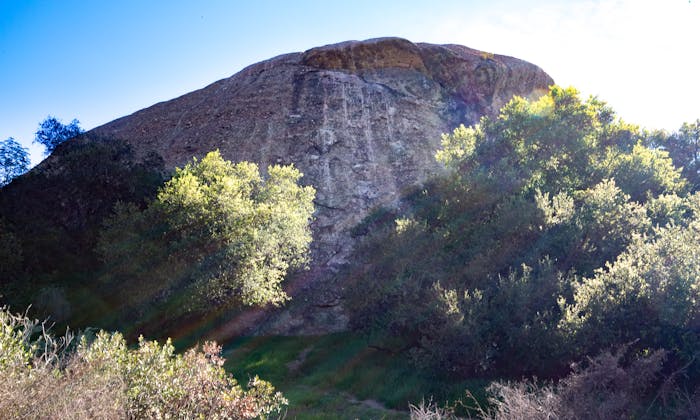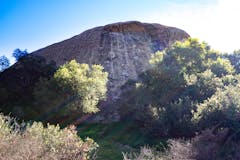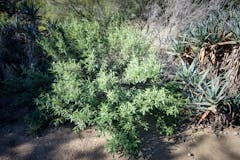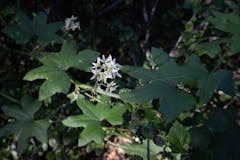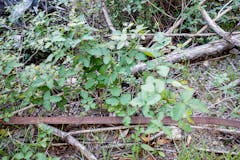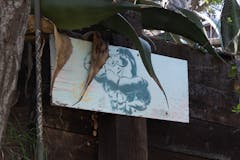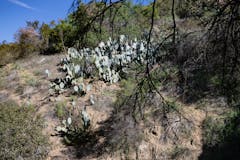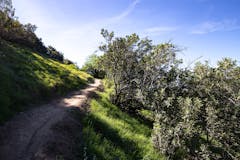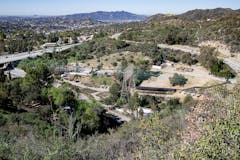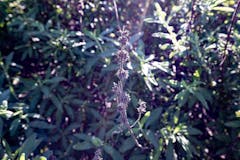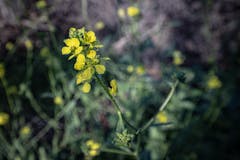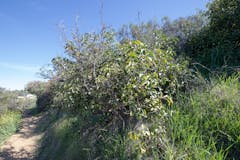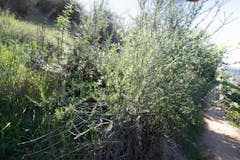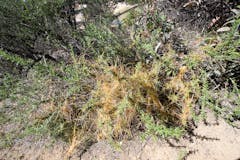A small day hike easily accessible of the 210 just north of Eagle Rock. The trail is fairly steep, but not especially challenging, and it can be narrow in places. If you want to picnic on the hike, do it before or after your hike at the trailhead where there is a park with picnic tables. Lots of black sage, scrub oak, Lemonade Berry and Sugar Bush and views of the valley.
Perched above the city of Eagle Rock sits a large boulder, the city’s namesake. When the sun shines just the right way, a shadow forms on the rock, making an eagle-like shape.
The rock is easily visible from the 210 freeway, so locals are likely to be familiar with it. I remember my parents pointing the rock out to me when I was a kid, and we lived 40 miles east.
The hike is an easy-to-access, casual day-hike. I’m picking hikes that are easy and accessible because my four-year-old son has to be able to handle them. And I have to be able to handle it with my backpack and 4-year-old son on my shoulders.
This hike is short but steep and offers a nice view of the San Gabriel Valley and Los Angeles Basin. It starts at a recreational park and goes around and above Eagle Rock.
It wasn’t a challenging hike, but there were places where the path narrowed with steep hillside, so I had to hold my son’s arm tightly as we worked our way through.
As for vegetation, we saw lots of Scrub Oaks (Quercus berberidifolia), Black Sage (Salvia mellifera), a little bit of Poison Oak (Toxicodendron diversilobum), opuntia cacti, and Sagebrush (Artemisia californica). What stood out was the number of Sumacs: Lemonade Berry (Rhus integrifolia) and Sugar Bush (Rhus ovata), and wild cucumber (Marah macrocarpa) that draped just about everything.
We also saw this neat little plant, dodder (Cuscuta, possible Cuscuta subinclusa). Dodder is fascinating because its evolutionary history is plainly on display for all to see. It is a plant made up only of a stem, no roots, no leaves. It is a parasite that feeds off of a host plant. It has no need for leaves for photosynthesis or roots for taking water and minerals. Instead, it plugs directly into its host and takes from there.
There are many dodders in the world. The only way to accurately identify by sight is to see them when they are flowering (they go through the same flowering and seeding lifecycle as regular plants). When a dodder first begins to grow from seed, it forms a root and sends out shoots that seek a host plant. If it doesn’t find a host plant in 5-10 days, it dies. Once it has a host, it detaches its roots and simply grows as a stem around the plant. It’s like a bean vine without leaves.
As for invasive plants, there were plenty of the usual suspects: white horehound, dandelions, yellow mustard, aloe, and castor bean. All in all, it was a good hike but a little short. Without my son there, we probably would have been up and back in less than a half hour.

